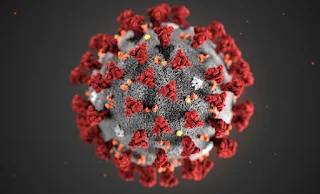COVID-19 Symptoms in 2025: What You Need to Know
As we move further into 2025, COVID-19 remains a global health concern. Although it no longer dominates headlines as it did in the early years of the pandemic, the SARS-CoV-2 virus continues to spread in communities across Kenya, Africa, and globally.
Is COVID-19 Still Spreading in 2025?
Yes. COVID-19 is still circulating across the world. In Kenya and many other countries, outbreaks continue to occur, particularly in areas with limited access to healthcare or where large gatherings take place. Testing rates have declined, meaning the actual number of infections may be much higher than reported.
Who Is at Risk of Severe COVID-19?
- Older adults (especially those over 65 years)
- People with underlying health conditions such as diabetes, hypertension, or cancer
- Individuals with weakened immune systems
- Those living in underserved or high-poverty communities
Common COVID-19 Symptoms in 2025
While new variants of the virus continue to emerge, the most common symptoms of COVID-19 have remained largely consistent.
- Fever
- Cough
- Fatigue (tiredness)
- Sore throat
- Runny or blocked nose
- Loss of taste or smell (anosmia)
- Headache
- Muscle or body aches
Other Possible Symptoms
Some individuals may experience less common symptoms, particularly if they develop a more severe or prolonged form of the illness.
- Shortness of breath
- Chest pain
- Eye irritation
- Diarrhea
- Skin rashes
Should You Get Tested?
Testing is recommended if you develop symptoms or have been in contact with a confirmed case. PCR testing remains the most accurate, though approved rapid antigen tests are also useful. Keep in mind that a negative test result does not always mean you are virus-free, especially if you are symptomatic.
Treatment Options for COVID-19
For high-risk individuals, the antiviral medication Paxlovid can significantly reduce the risk of hospitalization if taken within five days of symptom onset. For most mild cases, treatment includes:
- Rest
- Hydration
- Over-the-counter fever reducers like paracetamol
- Staying at home to avoid infecting others
Preventing COVID-19 in 2025
The best ways to reduce your risk of infection remain the same:
- Get vaccinated and receive booster shots when eligible
- Wash your hands regularly with soap and water
- Ensure indoor spaces are well-ventilated
- Wear a mask if you are unwell or in crowded places
- Avoid contact with high-risk individuals if you are sick
Long COVID and Recovery
Most people recover within 7–10 days, but some may experience symptoms for several weeks. Vaccinated individuals typically recover faster and are less likely to develop long COVID. Maintaining up-to-date vaccinations can reduce both the severity and duration of illness.
Conclusion
COVID-19 continues to circulate in 2025. Although many people experience mild symptoms, vulnerable individuals are still at risk of severe outcomes. Staying informed, testing when symptomatic, and continuing preventive measures remain key to managing the ongoing presence of COVID-19 in our communities.
Call for Help

